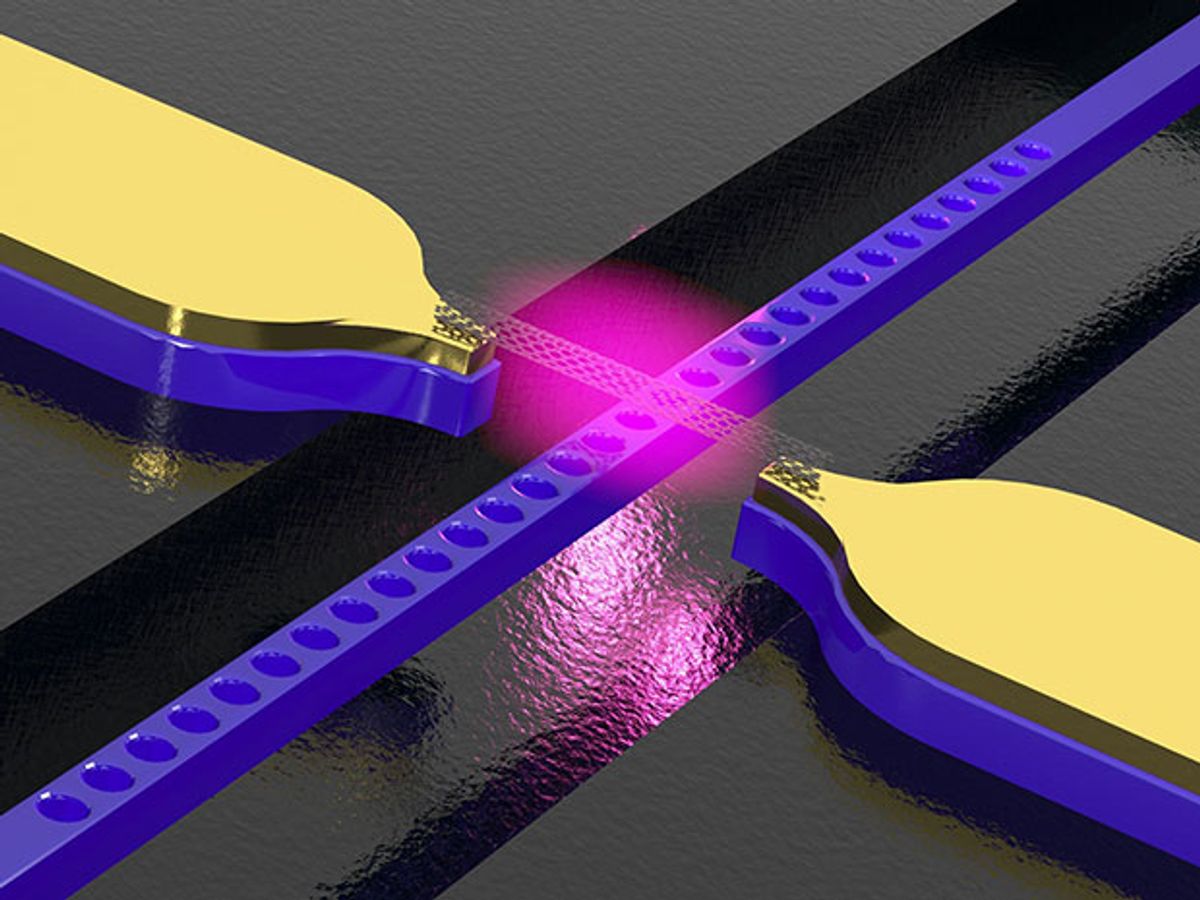Using fiber optic cables as waveguides for transmitting light that is ultimately converted into voice calls or data has been a mainstay for the telecommunications industry for decades.
But it’s been a massive struggle to adapt this kind of technology to the scale of a microchip so that photons carry data through an integrated circuit instead of electrons. Now researchers at Karlsruhe Institute of Technology (KIT) in Germany have tackled a major problem in making integrated optical circuits a reality by creating nanoscale photonic emitters with tailored optical properties that can be easily integrated into a chip.
The solution involves carbon nanotubes (CNTs) that are electrically driven to emit light. The CNTs don’t take up much room in the nanostructured waveguide and have proven effective in converting an electrical signal into clearly defined optical signals. When the CNTs are deposited on the waveguides, they act as a light source when an electrical voltage is applied.
In research described in the journal Nature Photonics, the KIT researchers integrated the light-emitting CNTs into the nanostructured waveguide with a new twist on the process known as dielectrophoresis, which is typically used in biology to deposit nanoparticles on carrier materials. The process basically exploits the force that occurs when a polarizable particle is exposed to a non-uniform electrical field. This approach allowed the researchers to assemble in parallel CNTs into multiple device structures.
The nanostructured waveguides that direct the light coming from the CNTs after they have been deposited on them were produced through electron beam lithography.
“It is the combination of the unique properties of carbon nanotubes and of photonic crystals which provide the real benefit here,” explained Ralph Krupke of KIT’s Institute of Nanotechnology in an e-mail interview with IEEE Spectrum. “The CNTs can be excited electrically to emit light and they have such a tiny footprint that they can be integrated into a photonic crystal.”
Krupke added that the photonic crystal allows for photonic engineering and forces the nanotube to emit into a very narrow wavelength range. This approach makes it possible to fabricate an electrically powered quasi-monochromatic light source on a chip using scalable CMOS compatible processes.
With this development, the KIT researchers believe they have developed a compact device for converting electricity into light that will be applicable in the next generation of computing that uses photons instead of electrons in an integrated circuit. The devices that the KIT researchers have already developed can produce light signals in the gigahertz frequency from electrical signals.
Krupke added: “Our next goal is to integrate the new emitter device structure into more complex device architectures including on-chip detectors and to eventually build a complete photonic circuit.”
Dexter Johnson is a contributing editor at IEEE Spectrum, with a focus on nanotechnology.



